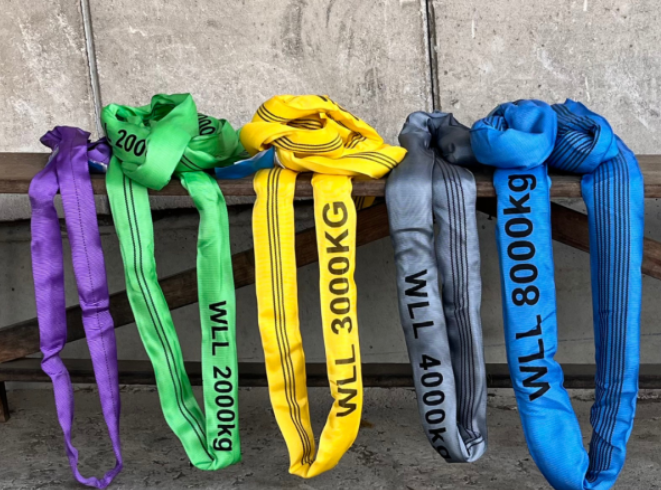What is the Safety Factor of a Textile Sling?
"How safe is a textile sling ?", you might ask. If you're not sure about the safety aspect of this daily-used equipment, you're not alone. Let's delve into this topic and understand the safety factor of textile slings together.
Textile slings are commonly used for lifting and handling heavy loads in various industries, such as construction, mining, logistics, and others. However, with regular use, they can develop tears, fraying, or wear and tear, which can render them unsafe for use. In this article, we will discuss the safety aspect of textile slings and what factors need to be considered for ensuring their safety.

Textile Sling Safety Factor: What's Important?
Material Selection
The safety factor of textile slings depends largely on the type of material used to manufacture them. High-quality materials ensure durability and resistance to wear and tear, thereby enhancing the safety aspect. Materials like high-tensile strength fibres, such as polypropylene or polyester, are commonly used for textile slings as they offer excellent tensile strength with minimal elongation under load.
Working Load Limit
Working load limit (WLL) is an important factor to consider when using textile slings. WLL is the maximum weight that a textile sling can safely handle without exceeding its tensile capacity. It is essential to follow the recommended WLL specified by the manufacturer to ensure the safety factor of the textile sling.
Cargo Identification and Handling
Safe handling of cargo requires identification of the type of load being transported and appropriate handling methods. Textile slings should be used only for their intended purpose and not for any other cargo that is not recommended by the manufacturer. Additionally, it is crucial to follow the recommended lifting methods and avoid sudden movements or overloading of the textile sling.
Regular Inspection and Maintenance
Regular inspection and maintenance of textile slings are crucial for ensuring their safety factor. Visual inspection should be carried out regularly to identify any damage or wear and tear. Additionally, it is advisable to conduct regular maintenance checks to ensure that the textile sling is in good condition.
What If There's an Accident?
If an accident occurs with a textile sling, it could result in serious harm or even death. Therefore, it is essential to take quick action if there is any sign of damage or wear and tear to a textile sling. Additionally, it is vital to report any accidents or near misses to the appropriate authorities to ensure corrective measures are taken promptly.
Staying Safe with Textile Slings
It's essential to follow the safety guidelines provided in this article when using textile slings to ensure maximum safety factor. Here are some actionable suggestions:
Read the Manual: Always read the manufacturer's manual before using a textile sling to familiarize yourself with its recommended usage and safety guidelines.
Inspect the Slings: Inspect textile slings regularly for any damage or wear and tear. Do not use damaged or frayed slings.
Use Proper Lifting Techniques: Use recommended lifting techniques and avoid sudden movements or overloading of the textile sling.
Rotating Slings: Rotate textile slings regularly to evenly distribute wear and extend their life.
Report Damaged Slings: Report any damaged or worn-out textile slings to your supervisor or the manufacturer immediately for corrective action.
Train Your Employees: Provide training to your employees on safe handling procedures for textile slings to ensure they understand how to use them properly and avoid accidents.
Purchase Approved Slings: Only purchase textile slings from reputable manufacturers who provide third-party approval for their products to ensure their safety factor.
511
0
0


Comments
All Comments (0)